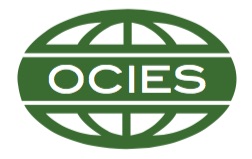Cross-border education for pupils of kindergartens and schools: The case in Hong Kong
Keywords:
Cross-border education, educational equality, school educationAbstract
Cross-border education is defined as the movement of people, knowledge, programs, providers, and curriculums across national or regional jurisdictional borders. Each year, millions of students access better education by crossing their national borders from less developed or newly-industrialized countries to Western, industrialised countries. Most are tertiary education students but the numbers engaged in secondary, primary, and pre-school education are also significant.
Under the implementation of “one country two systems” in Hong Kong after the transition of sovereignty from Britain to China in 1997, and a decision of a case in The Court of Final Appeal of Hong Kong in 2011, babies born in Hong Kong to mainland Chinese parents are entitled to the right of abode in Hong Kong. Since then, tens of thousands of such births have occurred. More than 20,000 cross-border students travel from China to attend public schools in Hong Kong every day. This paper explores equality issues faced by these students. The paper evaluates the results of various stakeholders working together to solve important issues; for example, dedicated school zones, immigration clearance services, setting up Hong Kong classes in Chinese schools, and language, communication, and cultural support. The paper argues that inequality is prevalent.
Downloads
Published
Issue
Section
License
The International Education Journal: Comparative Perspectives is the official journal of the Oceania Comparative and International Education Society. The IEJ, (ISSN 1443-1475), publishes a general volume bi-annually in July and December and also publishes Special Editions occasionally. It is a free, open-access scholarly journal, managed by volunteers. There are no article processing charges, or any charges to authors.
In relation to intellectual property, as of 2020, the IEJ: CP claims only first publication rights; copyright of all work published in the journal remains with the authors under Creative Commons copyright license CC-BY-ND (4.0). Author(s) retain all rights to their works, ensuring that reference to the International Education Journal: Comparative Perspectives is clearly stated on any copies made or distribution. Submissions must not involve third parties with a claim to copyright, and be the sole work of the author(s). It is the responsibility of the author(s) to secure permission to reproduce photographs, illustrations, figures or tables. Single images, tables or figures can be re-used . If more than a single image or table are to be re-used authors must attribute first publication to IEJ: CP notify the IEJ: CP Editor. Authors may also make derivative works which are subject to these limitations.
See https://creativecommons.org/licenses/by-nd/4.0/ for more detail.
Re-distributed or used material must be referenced to the International Education Journal: Comparative Perspectives.
